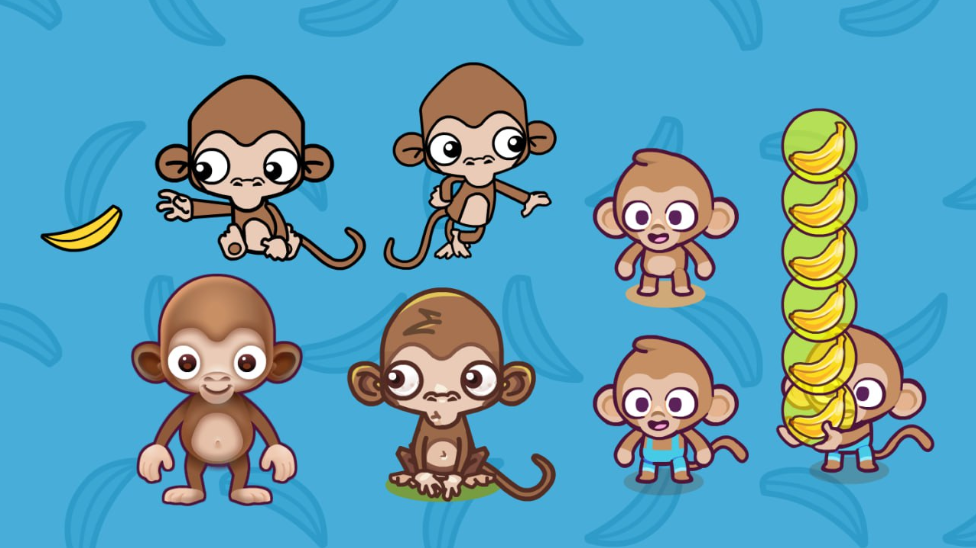ColoringPagesJourney has quickly become a go-to resource for teachers seeking hands-on, meaningful activities. In 2025, the classroom buzzes with creativity, and Coloring Pages are not just filler—they're a game-changer. These pages do more than fill time. They build skills, spark curiosity, and create shared moments for you and your students.
1. Science in Color: Biology, Weather, and the World Around Us
Who says science has to stay inside the textbook? With coloring pages, science comes alive right at your students' desks. Kids don’t just see the stages of a butterfly—they bring them to life in full color. That’s the kind of learning that sticks.
Biodiversity coloring sheets: From rainforests to deserts, students use crayons to highlight diversity in nature.
Life cycles and habitats: Watch as students grasp food webs by coloring each creature’s role.
Weather wonders: Lightning bolts, clouds, and the water cycle become less abstract when students add their personal touch.
“Using visual aids like coloring sheets helps anchor new vocabulary,” says Dr. Casey Norton, a veteran science teacher from Texas, with over 12 years of classroom experience. “Students don’t just memorize—they connect and remember.”
Let kids color the water cycle, and suddenly, terms like ‘evaporation’ or ‘precipitation’ click. It’s not just drawing—it's understanding cause and effect, one marker stroke at a time.

Anchoring new language is facilitated by the use of visual aids such as coloring pages
2. Math Concepts Made Visual: Numbers, Patterns, and Shapes
Math doesn’t need to be intimidating. When Coloring Pages Journey enter the picture, math becomes less “do the worksheet” and more “let’s crack this puzzle together.” Students see the symmetry in mandalas or the logic in tessellations.
Counting & addition: Group fish by twos or solve puzzles that reveal secret images.
Geometry & spatial skills: Mandalas and pattern sheets transform geometry into art.
Hands-on problem-solving: Active learners gain the confidence to tackle tougher equations.
Ask any teacher: “What’s the secret to getting students excited about numbers?” Nine times out of ten, it’s a hands-on approach. And nothing says hands-on like coloring.
Learning Numbers and Basic Operations with Coloring Activities
Number recognition sheets help your students “see” the math. Immediate feedback—right or wrong—comes not from a red pen, but from a colored pencil. Suddenly, math anxiety drops.
Recognizing Patterns and Geometric Shapes in Art
There’s something satisfying about finishing a pattern. Students pick up on sequencing and symmetry, skills that help across subjects and in everyday problem-solving.
3. Language Skills: Alphabet, Sight Words, and Story Starters
Strong readers aren’t born—they’re built, page by page. Coloring activities make language accessible. Visual cues support word recognition, so everyone in your class can participate.
Alphabet mastery: “A is for Apple” isn’t just a chant. With coloring, it’s a hands-on, memorable lesson.
Sight word hunts: Hide key vocabulary in illustrations. Let students hunt and color as they learn.
Story coloring: After reading a passage, students color what they imagine, reinforcing comprehension.
“When children color a scene they’ve just read about, comprehension jumps. The art triggers memory and vocabulary,” shares Jessica Liu, elementary reading specialist (New Jersey, 15+ years).
Alphabet Mastery Through Interactive Coloring Pages
Tracing and coloring each letter helps students link sound to symbol. For kids just starting out, or English learners, these pages build confidence fast.
Boosting Vocabulary and Reading Skills with Coloring Stories
Linking stories to coloring is a classic trick. Students illustrate plot points, building both sequencing and imagination. It’s like giving words wings.
4. Social-Emotional Learning: Empathy, Emotions, and Teamwork
Learning goes deeper than facts and figures. Social-emotional learning (SEL) prepares students to understand themselves and others. In 2025, SEL is more than a buzzword; it’s essential.
Emotion wheels: Color faces to match feelings—happy, sad, frustrated, or proud.
Group murals: Large collaborative projects teach students how to work together.
Reflect and share: Ask, “What color is your mood today?” and see what conversations unfold.
Classroom review: “After using emotion coloring sheets, I noticed my students talking more openly about their feelings. It built trust we’d never had before,” says Maria Rodriguez, elementary teacher, Los Angeles (11 years).
Understanding Emotions and Feelings Through Coloring
Give kids the chance to color how they feel. Visualizing emotion helps them process and communicate—a skill that lasts a lifetime.
Fostering Empathy and Teamwork in Group Coloring Projects
No student is an island. Collaborative coloring builds respect for others’ ideas, turning classmates into teammates.

Classmates become partners through collaborative coloring, which fosters respect for others' opinions
5. History Comes Alive: Coloring Famous Events and Figures
Dates and names can be dry as toast. But hand your students a coloring page of Rosa Parks or the Apollo 11 landing, and suddenly, history has a heartbeat.
Timeline visuals: Match coloring sheets to key events for instant context.
Biographical sketches: Add a face (and some color) to the names in the textbook.
Critical thinking: Prompt students—“Why was this event important?”—and watch discussion unfold.
Important Historical Moments on Coloring Pages
Context matters. By coloring moments from history, students visualize the stakes and significance—far more powerful than rote memorization.
Celebrating Influential People Through Art
Greatness is easier to grasp when students bring it to life with their own hands. Portrait pages often include quotes or facts that spark curiosity.
6. Geography Through Art: Maps, Landmarks, and Cultures
The world is wide, but coloring brings it close. With map activities, students become explorers—without ever leaving their seats.
Map coloring: Trace continents, color borders, and locate oceans.
Landmark activities: Eiffel Tower, Statue of Liberty, or the Great Wall—let students “visit” the world’s wonders.
Cultural connection: Integrate holidays and traditions for a richer worldview.
Geography doesn’t have to be a list of capitals. It can be a passport to curiosity.
Mapping the World with Coloring Activities
Start with the basics—continents and oceans. Layer in details like climate zones or animal habitats. Each new color adds another layer of understanding.
Learning About World Cultures and Landmarks
Nothing opens minds like seeing how others live. Coloring iconic landmarks connects your students to places and traditions far from home.
7. Seasonal & Holiday Pages for Year-Round Lessons
Every month brings something new. Teachers harness this with themed coloring pages—turning seasons and holidays into learning opportunities.
Holiday spotlights: Pumpkins in October, snowflakes in December, hearts in February.
Monthly themes: Track the school year with coloring tied to weather, plants, or community events.
Class traditions: “Spring Art Show” or “Winter Gallery”—let students display their work.
Class UGC: “Our ‘Holiday Hallway’ fills up with art from every student—parents and staff always stop to admire. It builds school spirit,” says Tom Wilson, grade 2, Minnesota (14 years).
Incorporating Holiday Themes into Classroom Learning
Themed pages add sparkle to routine days. Students learn about cultural symbols while flexing creative muscles.
Creative Seasonal Projects for Every Month
Teachers link coloring to lessons on plants, weather, or local history. Each season becomes a new chapter in your class’s story.
8. Creative Extensions: From Coloring to Classroom Projects
Coloring is just the beginning. Teachers use these pages as a launchpad for bigger projects—connecting art, writing, science, and more.
Class murals: Combine individual pages into one big piece.
Project starters: A frog coloring sheet might lead to a pond habitat diorama.
Story prompts: Let students invent adventures for the characters they color.
The more connections, the deeper the learning.
Turning Coloring Sheets into Art Displays
Nothing beats seeing your work up on the wall. Art galleries and hallway displays foster pride and encourage effort.
Integrating Coloring into Multidisciplinary Activities
Blend coloring with writing or experiments. It keeps students invested, and turns “just coloring” into a multi-layered experience.
9. How to Choose and Integrate Coloring Pages for Maximum Impact
With so many resources, selection matters. The right coloring page can transform a lesson; the wrong one may waste precious time.
Check for accuracy: Facts and details matter.
Age-appropriate design: Too simple bores, too complex frustrates.
Purposeful integration: Align each activity with your teaching goal.
Dr. Rachel Kim, K–12 curriculum designer: “Pick pages that reinforce key concepts. Use one Free Color Page a week to review or preview lessons. It’s a small step with big results.”
Pair with group work: Sharing coloring builds discussion and peer learning.
Link to crafts or reading: Layered activities drive home your objectives.

Activities that are layered help you achieve your goals
10. Why Teachers Value Educational Coloring Pages
ColoringPagesJourney understands that great teaching isn’t about filling time—it’s about building connections, fostering growth, and keeping every student engaged. Teachers consistently find that Coloring Pages:
Increase focus
Boost motor skills
Improve comprehension
Make learning fun and memorable
In a digital world, there’s still magic in paper, pencil, and creativity. That’s why ColoringPagesJourney keeps innovating—so you can do what you do best: inspire.
Want to see more? Check out Coloring Pages Journey for fresh ideas and ready-to-print resources, tailored for real classrooms like yours.




Какво мислите?
Регистирайте се, за да добавите коментар.
Ако вече имате регистрация, влезте с потребителското си име и парола.